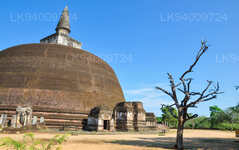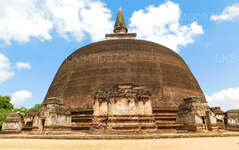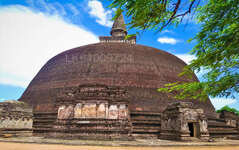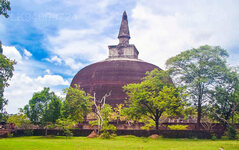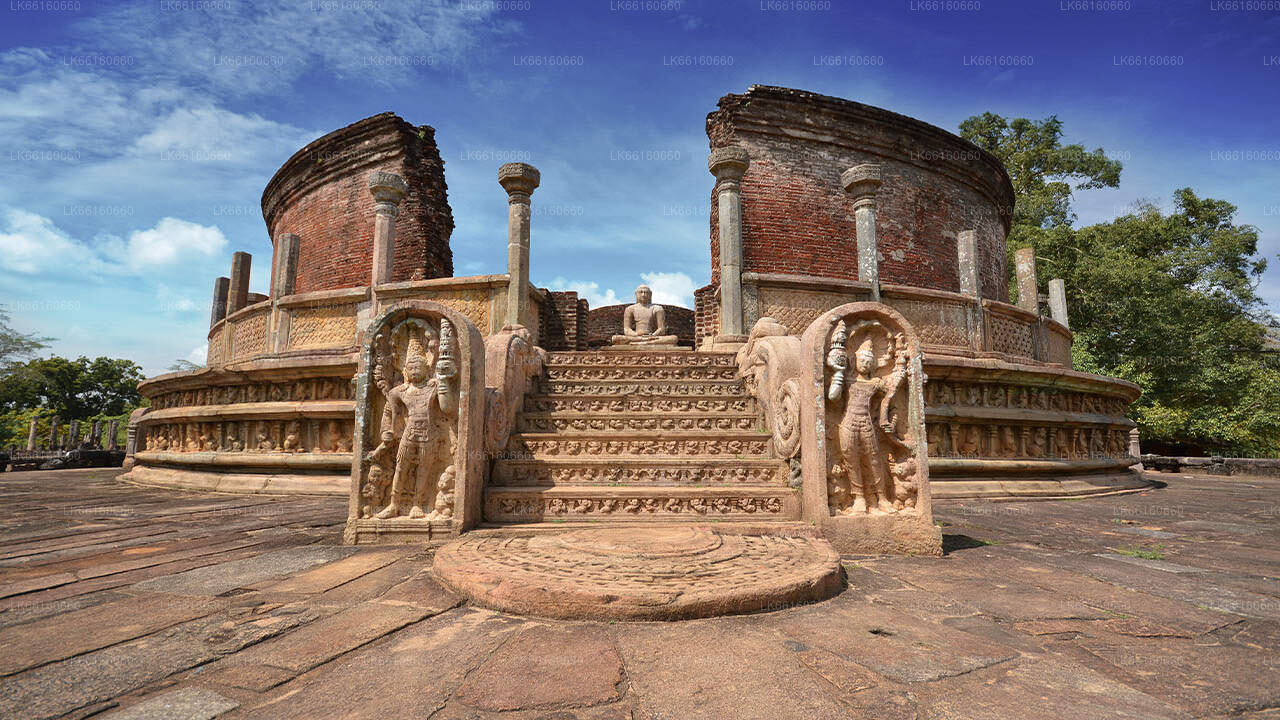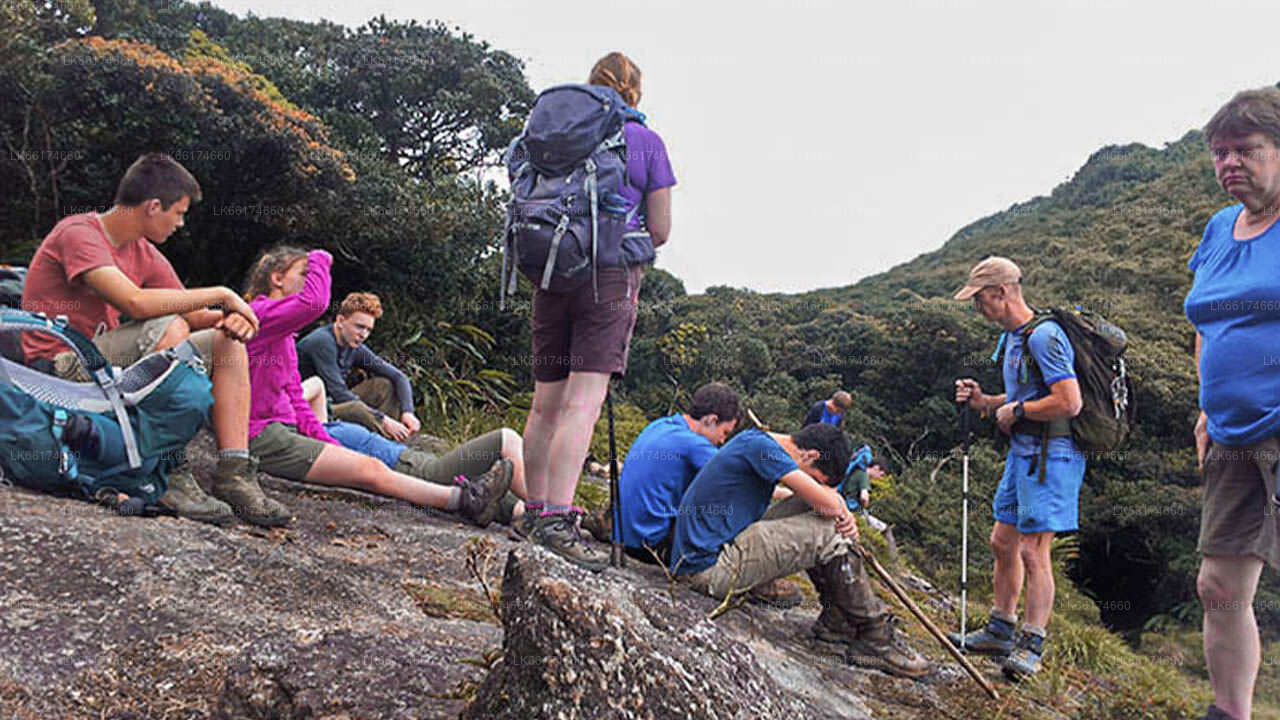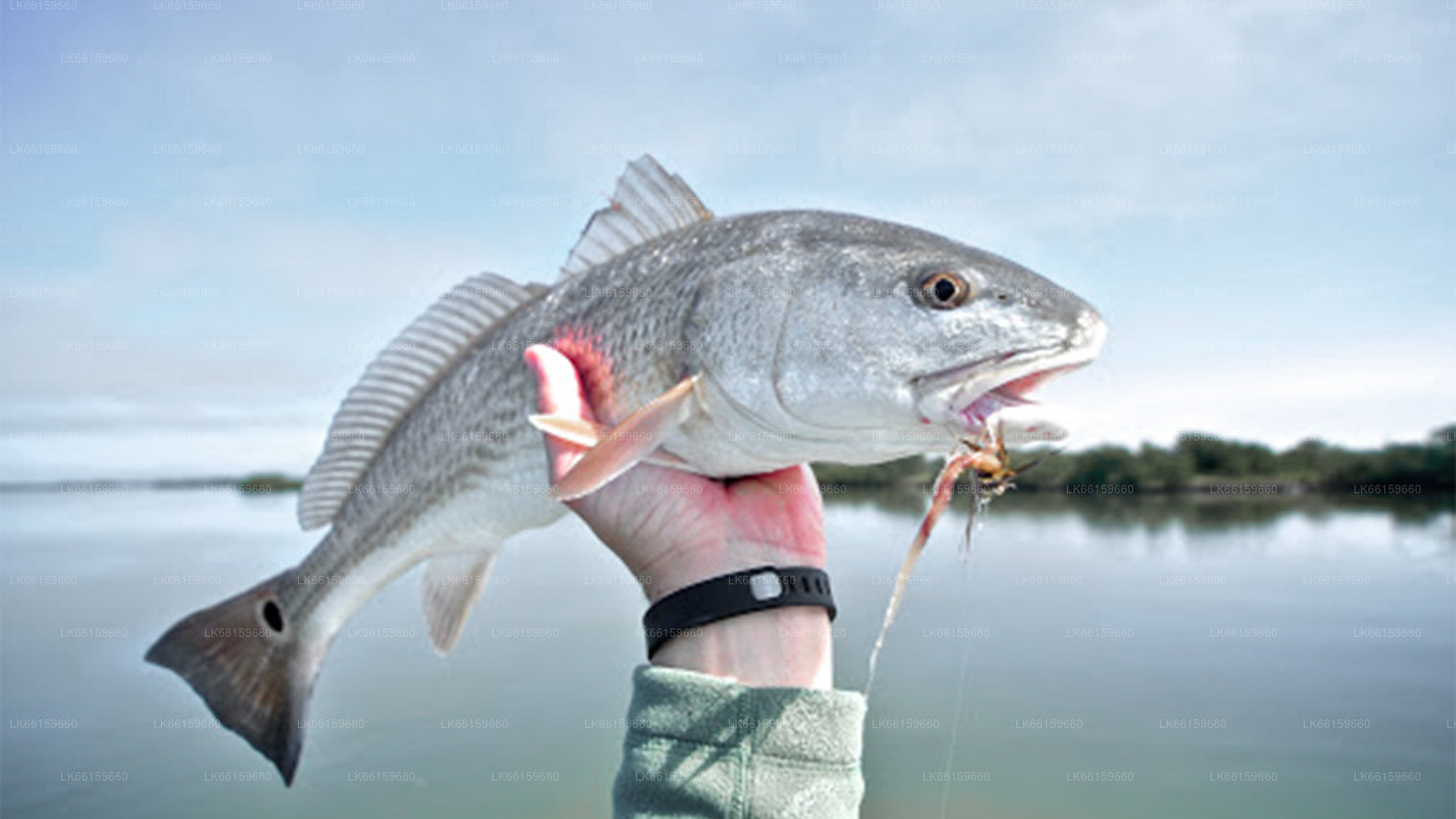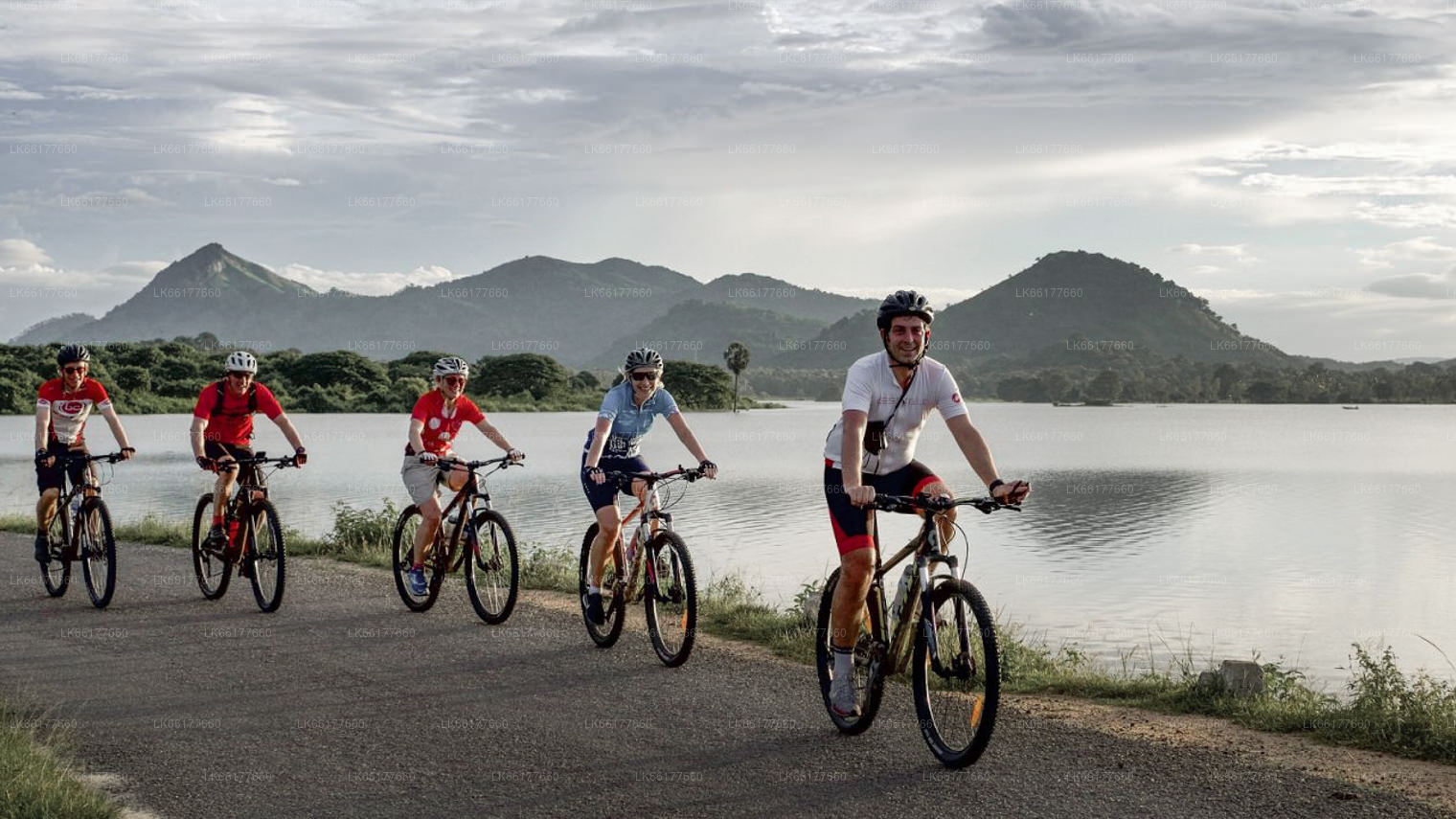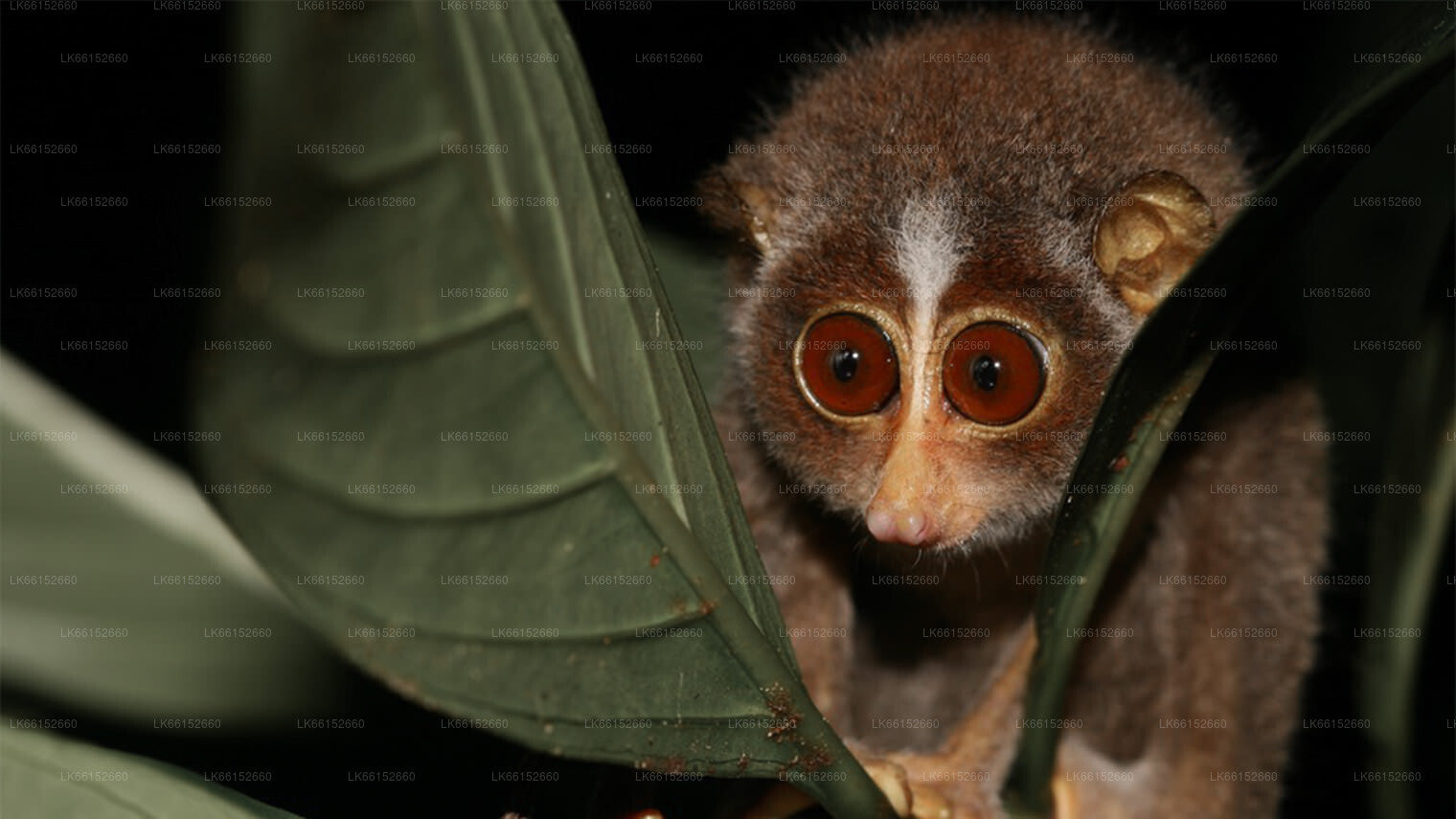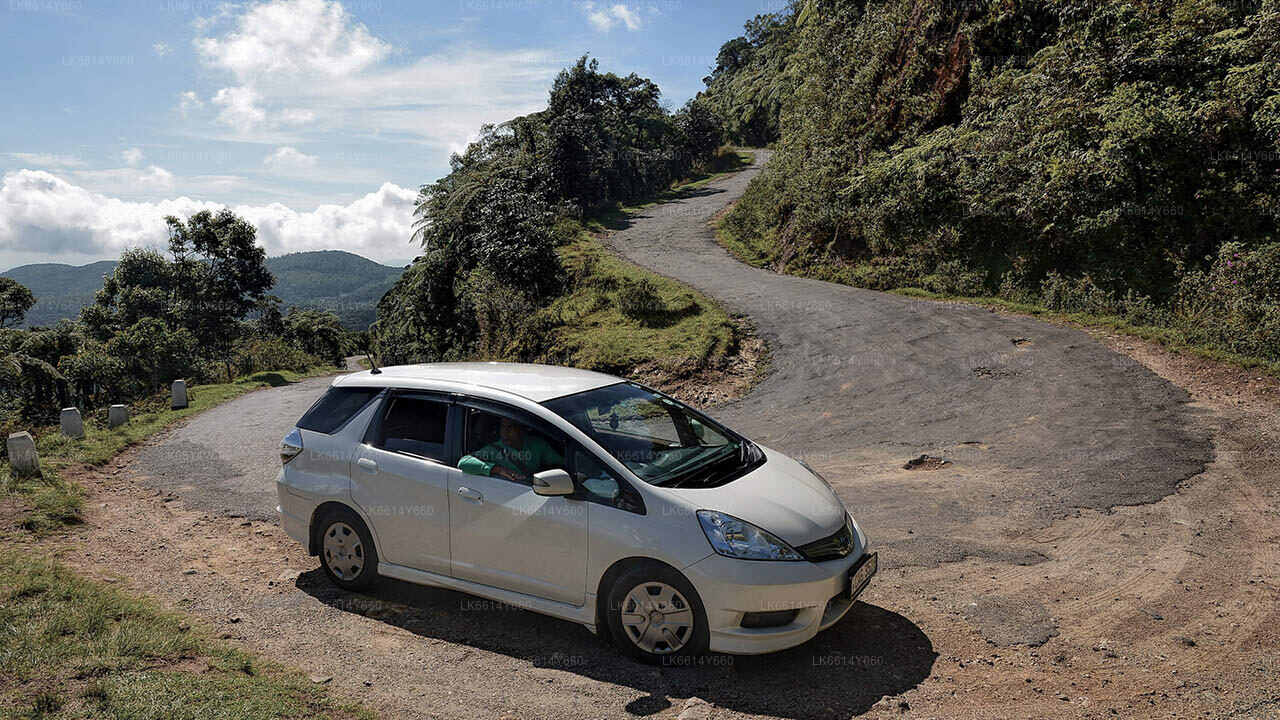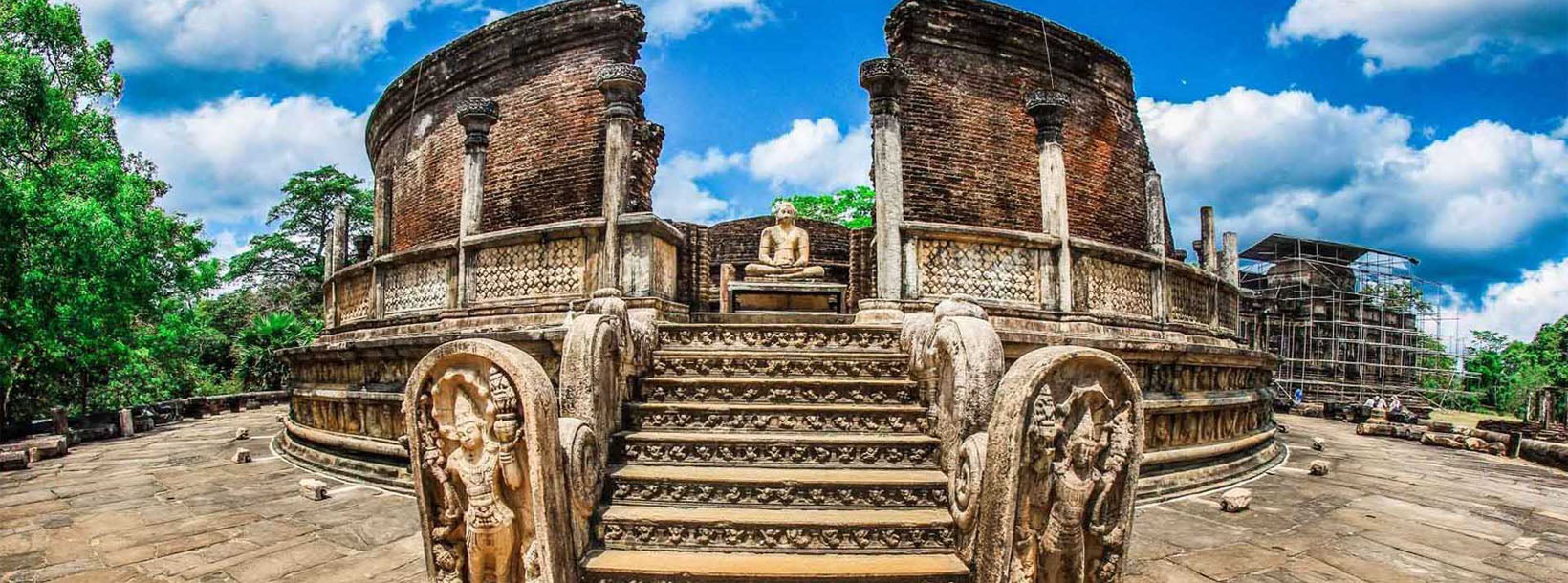
Città di Polonnaruwa
Polonnaruwa, patrimonio mondiale dell'UNESCO in Sri Lanka, fu la capitale medievale del paese (XI-XIII secolo). Rinomata per le sue rovine ben conservate, tra cui le iconiche statue del Gal Vihara, vanta un'architettura imponente, che riflette la grandiosità dell'antica civiltà singalese.
Rankoth Vehera


Rankoth Vehera in Sri Lanka: Stupa with the Golden Pinnacle
Polonnaruwa was the second kingdom of the ancient kings of Sri Lanka, after the kingdom of Anuradhapura. Following the older tradition of the kings of the first kingdom, the Polonnaruwa kings too saw fit to leave their footprints in the form of stupas built during their times of reign. The stupas were usually different from in design from those of the Anuradhapura kings and followed a style unique to Polonnaruwa, but there were a few exceptions.Rankoth Vehera in Sri Lanka: Resembling Ruwanwelisaya
Ruwanweli is a stupa built by the king Nissanka Malla who ruled Polonnaruwa (AD 1187 – 1196). It was constructed in the style of the original Anuradhaphura Maha Vihara monastery stupas, bearing a close resemblance to one of the most famous stupas of Sri Lanka – ‘Ruwanwelisaya’. The original name of the stupa indicates that perhaps this resemblance was intentional. However the name was changed later on to ‘Rankoth Vehera’. ‘Ran’ means gold, and ‘koth’ is the word used for the pinnacle of a stupa in the Sinhalese language. Hence Rankoth Vehera approximates in English to ‘Stupa with the Golden pinnacle’. Rankoth Vehera is one of the most well-known and revered stupas of the Polonnaruwa era.
Rankoth Vehera in Sri Lanka: 10 Things You Should know about Rankoth Vehera
- Brick was the only construction material used in the entire stupa.
- Rankoth Vehera’s circular base has a diameter of approximately 170m (550 feet) and a height of approximately 33m (108 feet) at the tip of the stupa.
- However, renovation was carried out on the upper portion of Rankoth Vehera by later rulers changing the height of the structure. Research has shown that the original height of the stupa may have been as great as 200 feet (61m).
- Even after the drastic decrease Rankoth Vehera remains the largest stupa in Polonnaruwa, and the fourth largest in the country.
- Rankoth Vehera has four Vahalkadas supporting the weight of the stupa, which are also made of brick.
- The entire stupa lies in the center of a large square terrace that is surrounded by a brick wall.
- The terrace has four entrances in the directions of the four cardinal points, with sand paths leading up to them.
- It is inscribed on a stone close to one of the entrance that King Nissanka Malla watched over and supervised the construction of the stupa.
- The inscription also mentions that he worshiped the stupa from a stone platform.
- This platform can be found at a corner of the terrace on which the stupa is placed.
Polonnaruwa, along with Anuradhapura, has a literal treasure trove of well-preserved historical places to visit, such as Rankoth Vehera.
Informazioni sul distretto di Polonnaruwa
Polonnaruwa è la seconda città più grande della provincia centro-settentrionale dello Sri Lanka. L'antica città di Polonnaruwa è stata dichiarata Patrimonio dell'Umanità dall'UNESCO. Polonnaruwa ha una grande storia di conquiste e lotte alle spalle e costituisce a pieno titolo il terzo elemento del Triangolo Culturale. Situata a circa 140 km a nord-est di Kandy, Polonnaruwa offre ore di piacere infinito per gli amanti della storia e della cultura, grazie ai suoi numerosi luoghi di interesse.
Gran parte delle rovine fisiche che si possono ammirare oggi sono attribuite al re Parakrama Bahu I, che spese molte risorse reali nella pianificazione urbana, inclusi parchi, edifici, sistemi di irrigazione e così via. Il periodo del suo regno è considerato un'età dell'oro, in cui il regno prosperò e prosperò sotto la guida di un sovrano visionario. Il Parakrama Samudra è un gigantesco carro armato e prende il nome dal suo patrono. Il famoso Palazzo Reale del re, la Sala delle Udienze circondata da elefanti di pietra splendidamente scolpiti e la Piscina per il Bagno riflettono le superiori capacità ingegneristiche dell'epoca
Informazioni sulla provincia centro-settentrionale
La Provincia Centro-Settentrionale, la più grande del Paese, copre il 16% della superficie totale del Paese. È composta da due distretti, Polonnaruwa e Anuradhapure. Anuradhapura è il distretto più grande dello Sri Lanka. La sua superficie è di 7.128 km².
La Provincia Centro-Settentrionale offre numerose opportunità per gli investitori che desiderano avviare un'attività imprenditoriale, in particolare nei settori dell'agricoltura, dell'industria agroalimentare e dell'allevamento. Oltre il 65% della popolazione della Provincia Centro-Settentrionale dipende dall'agricoltura di base e dall'industria agroalimentare. La Provincia Centro-Settentrionale è anche chiamata "Wew Bendi Rajje" perché nella provincia si trovano oltre 3.000 cisterne di medie e grandi dimensioni. Sri Maha Bodiya, Ruwanweli Seya, Thuparama Dageba, il Monastero di Abayagiri, Polonnaruwa Rankot Wehera e Lankathilake sono tra i più temuti.

